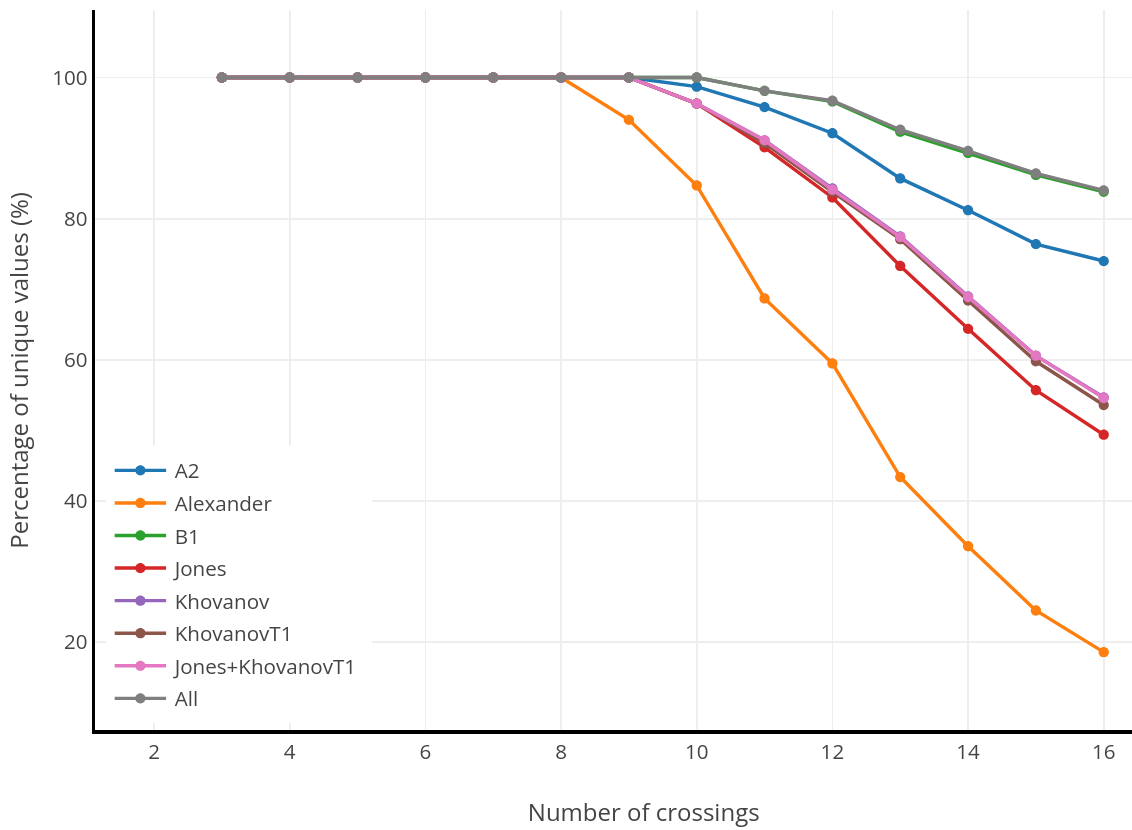Data
- Title: Big data comparison of quantum invariants
- Authors: Daniel Tubbenhauer and Victor L. Zhang
- Status: To appear in Journal of Experimental Mathematics. Last update: Wed, 5 Feb 2025 03:03:57 UTC
- Code and (possibly empty) Erratum: Click and Click
- ArXiv link: https://arxiv.org/abs/2503.15810
- LaTex Beamer presentation: Slides1, Slides2
Abstract
We apply big data techniques, including exploratory and topological data analysis, to investigate quantum invariants. More precisely, our study explores the Jones polynomial's structural properties and contrasts its behavior under four principal methods of enhancement: coloring, rank increase, categorification, and leaving the realm of Lie algebras.
A few extra words
The Jones polynomial is widely recognized as one of the most significant knot invariants of the twentieth century, and Jones' groundbreaking discovery uncovered profound and unexpected connections between diverse areas of mathematics and physics. The Jones polynomial serves as the foundation of a larger family of knot invariants derived from quantum groups, known as (Witten)--Reshetikhin--Turaev invariants. These invariants also have categorified counterparts, positioning them as remarkable objects at the intersection of multiple mathematical fields.
This paper is essentially interactive, which can be accessed by clicking on the links above.

